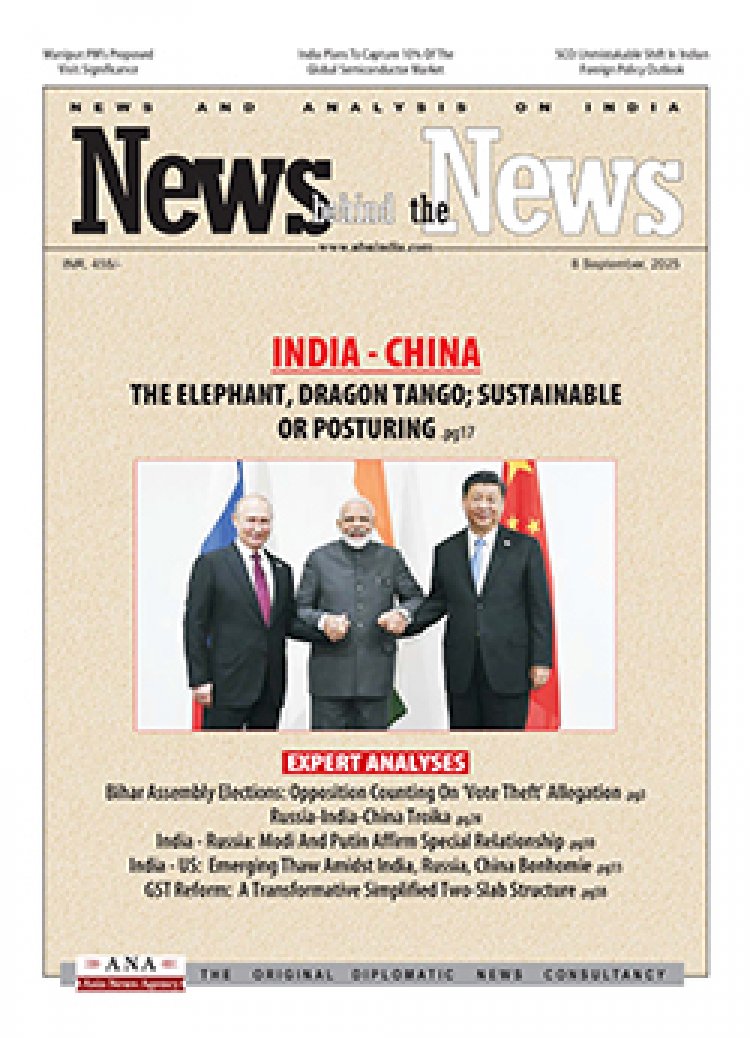Demystifying GDP Growth Rates
STORIES, ANALYSES, EXPERT VIEWS

Last week, Rajya Sabha undertook a 'short duration discussion’ on the Indian economy. At one level, the discussion was on predictable lines: The Opposition parties tried to corner the government on all the worrying trends — unemployment, inequality, poverty, hunger etc. — while the government pointed to all the good news — the rising stock market, the rebound in GDP growth etc.
Udit Misra (writes on Trending Topics, Opinions and Top Headlines at Indian Express) explains the conflict.
Low per capita incomes
“The first element to note about India’s GDP growth rate is per capita incomes. India’s overall GDP is low despite having the most population of any country on the planet. That shows up in a fairly low per capita income, which, in turn, points towards our low levels of productivity.”
There is also the “wide chasm between all these developed economies and India when it comes to the average incomes. For instance, as against the world average of $13,330 per annum, India’s per person income is just $2,610 per year.”
Average annual GDP growth of 7.8% due to low Covid base
Also, the BJP is proud of the average GDP growth rate post-Covid at around 7.8%. According to Misra “while it is factually true that India’s average annual GDP growth rate in years 2021-22, 2022-23 and 2023-24 is 7.8%,” it needs to be noted that “India’s GDP fell by almost 6% in 2020-21, and this low base created an illusion of fast GDP growth rate in the succeeding years. For instance, even though India’s best GDP growth in the past three years happened in 2021-22 — GDP grew by over 9% — its actual GDP (in absolute terms) was just 3% more than where it was before Covid.
“In other words, the GDP grew by a total of 3% over the pre-Covid level in the next two years….”
Also, “when one does includes the data for the Covid year, the whole picture changes. For instance, notwithstanding the upside surprise in GDP growth in the recently released second quarter data, if one calculates how the economy has grown relative to 2019 (pre-Covid), the economy’s compounded annual growth rate (CAGR) is just 4.1%.
“Simply put, instead of being overly swayed by high GDP growth rates in each quarter, readers should understand that if one calculates these rate relative to 2019, then the annual growth rates plummet from near 8% per annum (so-called Hindutva rate) to merely 4% (so-called Hindu rate) per annum.”
Comparing GDP growth rates during Congress and Modi years
The first thing to note, writes Misra “is that if one assumes that India’s economy will grow by 7% in the current financial year, then the average GDP growth rate under PM Modi over the two five-year terms will be only 5.8%.
“This period can be broken into pre-Covid and post-Covid growth rates of 6.8% (highlighted in orange) and 4.6% (highlighted in red) respectively.”
Over its two terms, “the Congress-led UPA presided over an average annual economic growth rate of 6.8% — that’s a full percentage point more each year for a whole decade than the two terms of the Modi government……That’s a full percentage point more than the 6.8% per year at which India grew under PM Modi before the Covid pandemic.”
What makes these UPA-era performances stand out further is the fact that they were achieved by a coalition government in which the leading party was a terrible minority.















